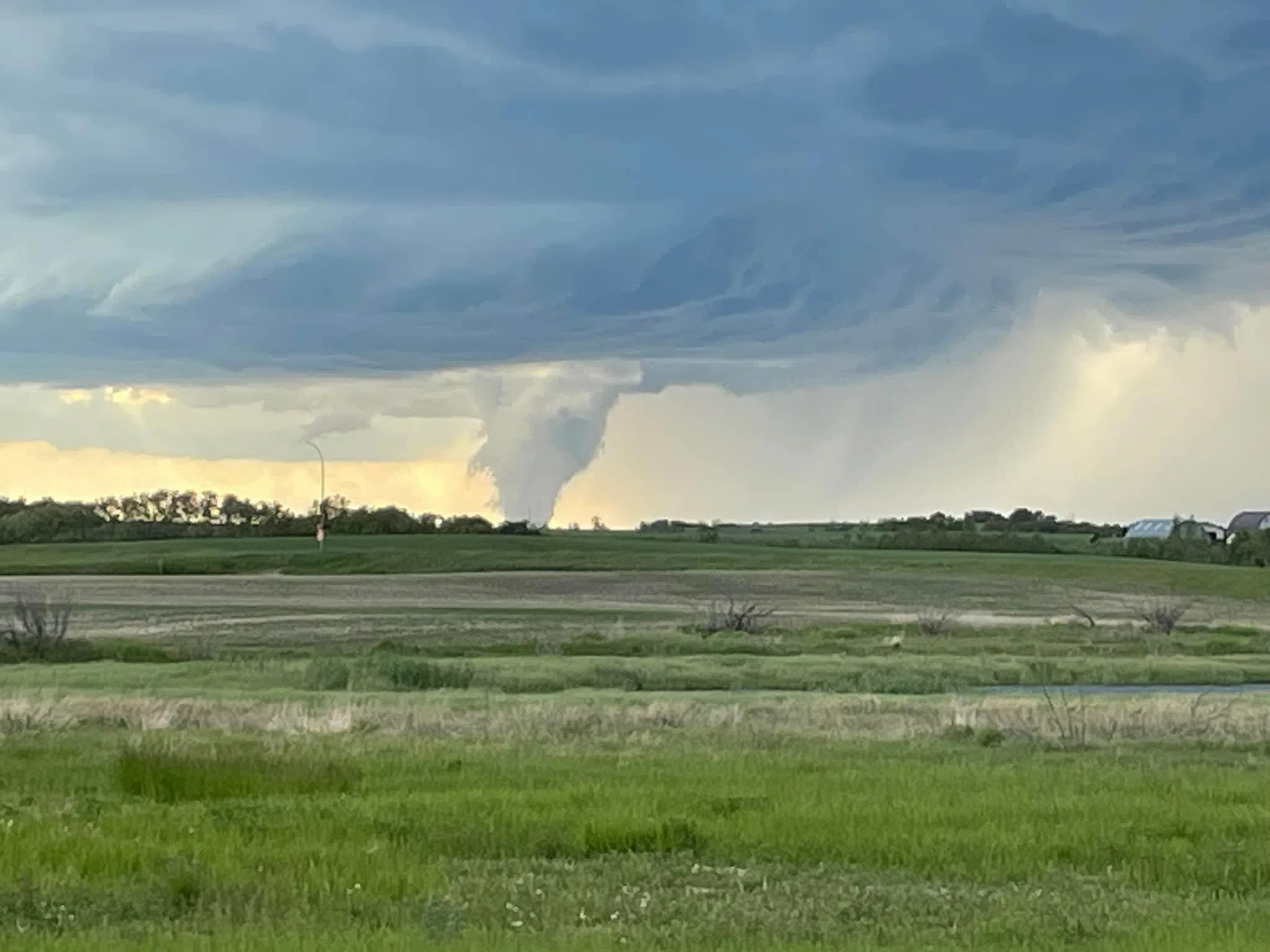The Northern Tornadoes Project has confirmed 13 tornadoes in Saskatchewan so far this summer.
Executive Director Dr. David Sills says most recently on July 1st there were five tornadoes confirmed in Saskatchewan including one at Gull Lake, three at Crescent Lake and one at Bredenbury. All rated EF0-default because there was no damage reported.
And June 23rd when storms raged across the province causing damage from north to south border to border, there initially were just two confirmed tornadoes at Borden and Fulda but Dr. Sills says that has changed. Those two tornadoes have been upgraded to EF0 from EF0 default.
“Then two tornadoes confirmed at Vonda, one at Buffer Lake and two more tornadoes confirmed at Annaheim. And those were confirmed not by video and social media reports like the others but by survey, damage survey, that was conducted by our team.”
Damage seen from storms that same day in Estevan, Gravelbourg and Carrot River were classified as downbursts or straight-line winds which on the prairies is often referred to as plough winds.
Dr. Sills says they had their first ever documented fire tornado caused by a wildfire last year in BC. So far, a fire tornado has only ever been recorded in Australia, the U.S. and now Canada.
He says it happened with a fire that was fairly stationary, burning hot during the night which generates an upward current of air that is enough to sustain a tornado. He says the tornado barely moved and was anchored to the fire.
“There are other things like firenadoes and these kinds of things where it’s just a quick plume of fire that comes up and rotates and this kind of thing and you see examples of those. But what we’re talking about is an actual tornado caused by a storm that’s generated by the wildfire so it’s even more intense then than just a fire whirl or firenado.”
They have a new 30-year data base that they are basing averages on going from 1991 to 2020 which pegs Saskatchewan at an average of 14.6 tornadoes a year. Saskatchewan used to have the most tornadoes a year in Canada, but Ontario is now number one at 18.3. Dr. Sills says that’s because of tornadoes detected in northern Ontario. He says they are now able to detect tornadoes in the boreal forests of Canada and had one staff member review all the satellite imagery they could find which led to the discovery of 230 tornadoes in the forests across Canada that no one knew about.




















